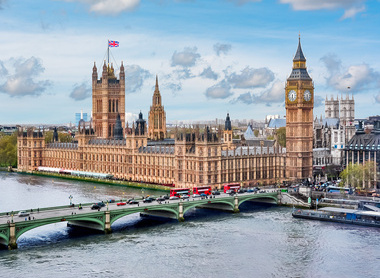Dun & Bradstreet: Does the public sector have the right data to sustain a smarter state? #techUKSmarterState
This week (26-30 September) the Central Government Programme is running its Building Smarter State Week in the run-up to the eighth edition of our flagship public services conference, Building the Smarter State, which will take place at The Royal Society on Thursday 29 September. All week we'll be featuring guest blogs from members on topics supportive the agenda.
Read the latest blog below:
For this short article, I’ll be exploring how data can underpin the Smarter State from a Net Zero perspective using data and technology, to ensure supply chain diversity and due diligence.
The supply chain conundrum
The public sector is already challenged by the Greening Government Commitments (GGCs), which set out the actions UK government departments and their partner organisations will need to take, to reduce their impacts on the environment up to 2025. However, while this deals with their direct estate, what about the wide supply chain that is supporting services all, across the government?
Large corporations and SMEs alike support the delivery of products, services and technological solutions that underpin the public sector. Therefore, meeting the commitments set out for a department is one thing but understanding wider supply chain health and ensuring it, too, is compliant is another.
This is where the process of due diligence is growing in importance - not only due to the Net Zero targets, but also in terms of understanding other risks in the supply chain. These include understanding who has ultimate beneficial ownership and control of suppliers, or their physical location in terms of natural and manmade disasters that are of course, more visible due to the war in Ukraine.
Is there an opportunity for a more holistic approach?
Government frameworks are starting to request Carbon Reduction Plans (CRPs), and slowly changing to address similar environmental issues – after all, the public sector is a large ship to turn. But is this the only way to measure impact? Are there more holistic approaches around softer sustainability and responsibility metrics, by which businesses of all shapes and sizes can be measured - not only on their environmental impact but also on social and governance factors? Data in these areas are becoming increasingly available, and Artificial Intelligence is making the use of these broader datasets more accessible.
Focusing on reducing carbon emissions as the only way to get to Net Zero could provide a skew in the types of businesses able to support the public sector, with only large corporations being able to easily compile the data for the ‘CRPs’. Whereas, combining broader statistics such as how much a company does to support the local economy or their corporate social responsibility efforts (that are often embedded in the start-up culture and posted as commentary on their websites) can yield the diversity that is also a key public sector supply chain requirement, i.e., enabling the SMEs within the supply chain.
This brings another point into the discussion, the ability to measure the social value that many frameworks are now requesting as part of tendering processes.
A catalyst for change – Intelligent ESG metrics
In terms of diversity and sustainability in the supply chain, a more holistic view could be taken by reviewing the suppliers in a portfolio based upon environmental, social and governance (ESG) metrics, alongside the CRPs. The use of wider data points than purely carbon emissions, such as water management, sourcing of raw materials, land use, biodiversity and so on will provide a clearer picture of their impact.
Using so much raw data though is of course challenging, with intelligent aggregated and structured data, with analytics applied, this is possible. Using data and technology in this way, the public sector could gain deeper visibility of its supply chains, beyond what the CRPs provide.
Not only do our public services rely on sustainable supply chains, but with such a complex landscape we should be looking slightly wider than carbon emissions when understanding who to do business with.
This article was written by Patrice Bendon, Government Customer Success Director at Dun & Bradstreet. Patrice is creative and strategic, with senior line management experience and a proven track record of delivering growth to the bottom line. Patrice has expertise in data-driven marketing and large technical product. Having worked in data-driven technologies her entire career across agencies, clients, partners and service side, she has managed both sales and marketing budgets, with full P&L responsibility. Learn more about this author.
To learn more about Dun & Bradstreet, please visit their LinkedIn and Twitter.
Building The Smarter State Conference - 29 September
You can also follow the campaign on techUK's Twitter and LinkedIn - #techUKSmarterState.
Join our Government Group
All techUK's work is led by our members - techUK members can keep in touch or get involved in our work by joining our Government Group, and stay up to date with the latest events and opportunities in the programme. Scroll down to view recent insights, and upcoming events and opportunities.

techUK's Government Group is our thriving community of 500 tech suppliers to Government. The group is composed of companies of all sizes, from new entrants to some of the biggest companies in the world. Group members receive our govtech market intel, and opportunities to engage with Government to understand their requirements and explore how tech can help meet them. If you're a techUK member working with Government to transform the delivery of our public services then this is the group for you.



